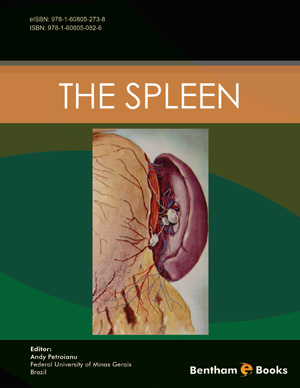Abstract
The spleen receives 5% of the total cardiac output every minute and less than 10% of the blood in the arterial capillaries is emptied directly in the venous sinuses. It is also a major site for the synthesis of tuftsin and properdin, two proteins which serve as opsonins. This organ is the largest lymphoid tissue of the body. Most of the splenic functions of fight against pathogens may be taken over by other organs. The major known functions of spleen are removal of aging erythrocytes and recycling of iron, elicitation of immunity, and supply of erythrocytes after hemorrhagic shock and removes intraerythrocyte inclusions. Up to 30% of platelets are stored within the average spleen and can be released in response to specific stimuli such as epinephrine. Splenic function can be assessed most simply by searching for Howell-Jolly bodies. The spleen can be visualized and its size estimated by scintillation scanning following injection of isotope-labelled, autologous, heat-damaged red cells, which are selectively removed by functional splenic tissue.
Keywords: Spleen, Functions, Phagocytosis, Hematopoesis, Metabolism, Immunology, Filtering.






















